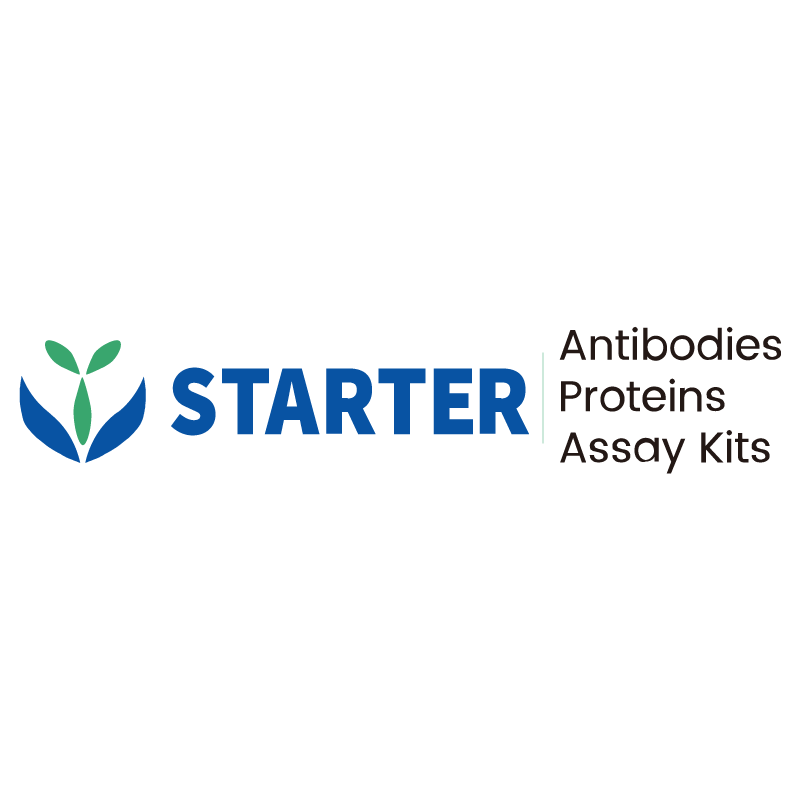WB result of Phospho-gamma H2A.X (Ser139) Recombinant Rabbit mAb
Primary antibody: Phospho-gamma H2A.X (Ser139) gamma Recombinant Rabbit mAb at 1/1000 dilution
Lane 1: untreated HeLa whole cell lysate 20 µg
Lane 2: HeLa treated with 100 ng/ml Nocodazole for 17 hours whole cell lysate 20 µg
Secondary antibody: Goat Anti-rabbit IgG, (H+L), HRP conjugated at 1/10000 dilution
Predicted MW: 15 kDa
Observed MW: 17 kDa
Product Details
Product Details
Product Specification
| Host | Rabbit |
| Antigen | Phospho-gamma H2A.X (Ser139) |
| Synonyms | Histone H2AX; H2a/x; Histone H2A.X; H2AFX; H2AX |
| Immunogen | Synthetic Peptide |
| Location | Nucleus |
| Accession | P16104 |
| Clone Number | S-981-56 |
| Antibody Type | Recombinant mAb |
| Isotype | IgG |
| Application | WB, IHC-P, ICC, IP |
| Reactivity | Hu, Ms, Rt |
| Positive Sample | HeLa |
| Purification | Protein A |
| Concentration | 0.5 mg/ml |
| Conjugation | Unconjugated |
| Physical Appearance | Liquid |
| Storage Buffer | PBS, 40% Glycerol, 0.05% BSA, 0.03% Proclin 300 |
| Stability & Storage | 12 months from date of receipt / reconstitution, -20 °C as supplied |
Dilution
| application | dilution | species |
| Dot Blot | 1:1000 | |
| WB | 1:1000 | Hu |
| IP | 1:50 | Hu |
| IHC-P | 1:200 | Hu, Ms, Rt |
| ICC | 1:500 | Hu |
Background
Phospho-gamma H2A.X (Ser139), also known as γ-H2AX, is a histone variant that plays a crucial role in the DNA damage response (DDR). It is phosphorylated at serine 139 by kinases such as ATM and ATR in response to DNA double-strand breaks (DSBs), which are often caused by ionizing radiation or cytotoxic agents. This phosphorylation event is one of the earliest cellular responses to DNA damage and results in the formation of γ-H2AX foci in the cell nucleus, marking the sites of DSBs on a one-to-one basis. These foci serve as recruitment signals for DNA repair proteins, facilitating the repair process and maintaining genomic stability. Due to its sensitivity and specificity, γ-H2AX is widely used as a biomarker for DNA damage and repair in research, including studies on cancer, aging, and environmental genotoxicity.
Picture
Picture
Western Blot
IP
Phospho-gamma H2A.X (Ser139) Recombinant Rabbit mAb at 1/50 dilution (1 µg) immunoprecipitating Phospho-gamma H2A.X (Ser139) in 0.4 mg HeLa+Nocodazole(100ng/ml,17h) whole cell lysate.
Western blot was performed on the immunoprecipitate using Phospho-gamma H2A.X (Ser139) Recombinant Rabbit mAb at 1/1000 dilution.
Secondary antibody (HRP) for IP was used at 1/1000 dilution.
Lane 1: HeLa +Nocodazole (100ng/ml,17h) whole cell lysate 20 µg (Input)
Lane 2: Phospho-gamma H2A.X (Ser139) Recombinant Rabbit mAb IP in HeLa +Nocodazole (100ng/ml,17h) whole cell lysate
Lane 3: Rabbit monoclonal IgG IP in HeLa + Nocodazole (100ng/ml,17h) whole cell lysate
Predicted MW: 15 kDa
Observed MW: 17 kDa
Dot Blot
Dot blot result of Phospho-gamma H2A.X (Ser139) Recombinant Rabbit mAb
Lane1: gamma H2A.X (Ser139) phospho peptide
Lane2: gamma H2A.X unmodified peptide
Primary antibody: Phospho-gamma H2A.X (Ser139) Recombinant Rabbit mAb at 1/1000 dilution
Secondary antibody: Goat Anti-rabbit IgG, (H+L), HRP conjugated at 1/10000 dilution
Immunohistochemistry
IHC shows positive staining in paraffin-embedded human ovarian cancer (Left) and negative staining in human ovarian cancer treated with phosphatase (Right). Anti- Phospho-gamma H2A.X (Ser139) antibody was used at 1/200 dilution, followed by a HRP Polymer for Mouse & Rabbit IgG (ready to use). Counterstained with hematoxylin. Heat mediated antigen retrieval with Tris/EDTA buffer pH9.0 was performed before commencing with IHC staining protocol.
IHC shows positive staining in paraffin-embedded mouse testis (Left) and negative staining in mouse testis treated with phosphatase (Right). Anti- Phospho-gamma H2A.X (Ser139) antibody was used at 1/200 dilution, followed by a HRP Polymer for Mouse & Rabbit IgG (ready to use). Counterstained with hematoxylin. Heat mediated antigen retrieval with Tris/EDTA buffer pH9.0 was performed before commencing with IHC staining protocol.
IHC shows positive staining in paraffin-embedded rat spleen (Left) and negative staining in rat spleen treated with phosphatase (Right). Anti- Phospho-gamma H2A.X (Ser139) antibody was used at 1/200 dilution, followed by a HRP Polymer for Mouse & Rabbit IgG (ready to use). Counterstained with hematoxylin. Heat mediated antigen retrieval with Tris/EDTA buffer pH9.0 was performed before commencing with IHC staining protocol.
Immunocytochemistry
ICC analysis of HeLa cells exposured to 10 J/㎡UV and then recovered two hours and untreated HeLa cells (below panel). Anti- gamma H2A.X (phospho S139) antibody was used at 1/500 dilution (Green) and incubated overnight at 4°C. Goat polyclonal Antibody to Rabbit IgG - H&L (Alexa Fluor® 488) was used as secondary antibody at 1/1000 dilution. The cells were fixed with 100% ice-cold methanol and permeabilized with 0.1% PBS-Triton X-100. Nuclei were counterstained with DAPI (Blue). Counterstain with tubulin (Red).


